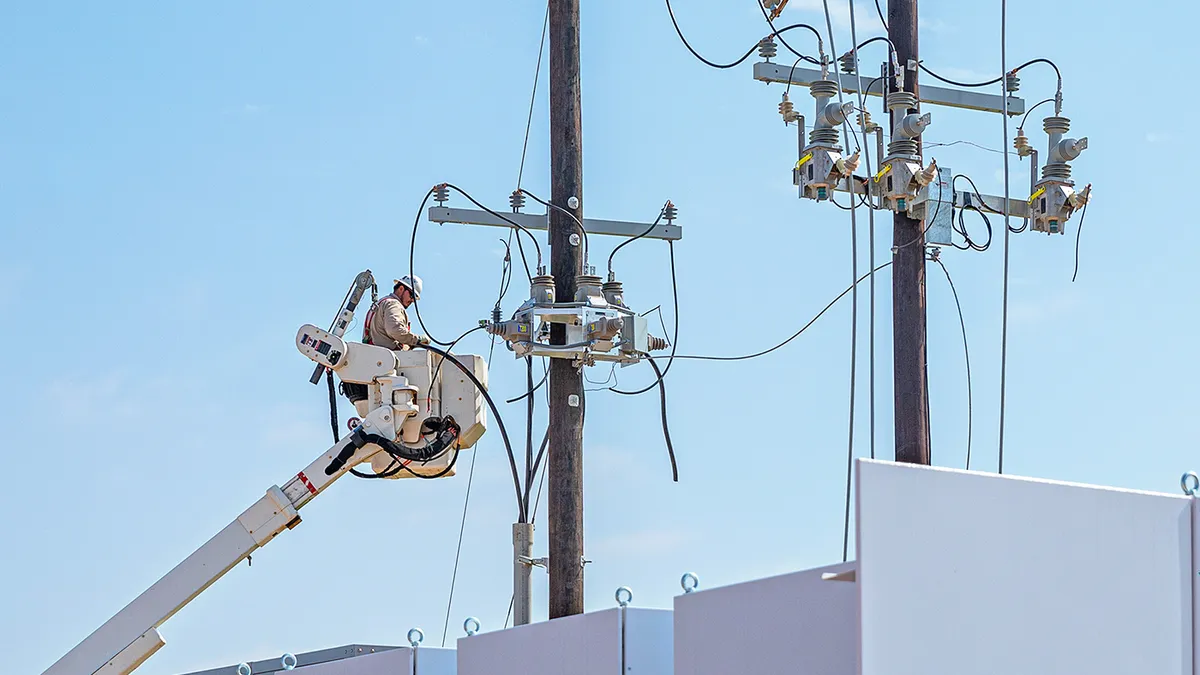New federal clean energy investment incentives are already increasing momentum for the development of renewable energy sources. As many more gigawatts of zero-carbon generation are connected to the grid, the need for grid modernization programs will become increasingly urgent.
With additional renewables installed as distributed resources via rooftop solar arrays, micro wind turbines, battery energy storage systems and even fleets of electric vehicles equipped with vehicle-to-grid (V2G) charging technology, distribution grid upgrades will be a significant area of focus. These five areas are likely to be the main points of emphasis as utilities launch capital investment programs aimed at distribution systems.
1. Fault Location, Isolation, and Service Restoration
Distribution grid protection via fault location, isolation and service restoration (FLISR) schemes is emerging as a preferred way to reduce impacts and duration of outages. Using a series of communicating reclosers that are deployed at remote locations throughout the distribution network, faults are quickly identified and isolated to the smallest segment possible. Strategically locating reclosers can minimize the footprint of an outage area and in some cases can restore service so quickly that consumers are barely aware there has been an interruption.
2. Power Quality
As baseload fossil-fueled plants are retired, a great deal of rotational inertia from these massive synchronous generators is taken off the grid, impacting frequency response capabilities, as well as leaving a void in the reactive power needed to power our inductive loads like motors in our washing machines, elevators and refrigerators. The power supplied by inverters that convert DC power from solar and wind facilities cannot provide the reactive power needed on the grid.
Installing capacitor banks can increase reactance on the distribution system to counter the loss of spinning inertia, while also reducing costs incurred due to losses with the reactance being provided more locally and dynamically instead of statically at the source of the generation. Capacitor banks working in tandem with autotransformers also provide the additional benefit of flatter voltage levels that can be more accurately matched to the design voltages of appliances and transformers, resulting in significant savings for both the utilities and customers alike.
3. Distributed Energy Resource Management Systems
Though much of the funding now available through the 2022 Inflation Reduction Act (IRA) will be directed toward development of utility-scale clean energy resources, some incentives are available for development and deployment of small behind-the-meter power systems.
With thousands of small, distributed energy resources (DER) being deployed, distributed energy resource management systems (DERMS) will provide the centralized controls needed by grid operators to aggregate and dispatch this power when needed to meet demand and maintain system stability. In addition to controlling DER, many of these DERMS platforms will be able to dispatch demand response programs.
4. Demand Response Programs
With the new load from electrification of the transportation fleet, the industry is likely to see a worsening of the so-called duck curve. Coined in 2012 by the California Independent System Operator, the duck curve describes the timing imbalance between a day’s peak demand and the decline in solar power generation.
There is an urgent need for many megawatts of energy storage, along with dynamic grid management due to the impending retirement of more than 20 gigawatts of baseload fossil power generation resources within the next few years, and increased deployment of intermittent solar and wind power connected to the grid.
To help address these issues, demand response strategies that shave peak demand on hot days will become a tool utilities can deploy. These programs may include thermostat programs (for example, decreasing the air conditioning set point by several degrees for a set period of time), pool pump programs, or electric water heater programs. In all instances, the intent is to decrease the load of these appliances during the peak periods of electricity usage. Even though the energy savings per household is quite small, when demand response programs are rolled out across large metropolitan areas, they can have significant impacts on the overall system load.
5. EV Charge Management
Many utilities are already formulating plans for major distribution upgrades in preparation for the coming wave of EVs that will need to be charged on a regular basis. Through smart meters, two-way communicating in-home chargers, and advanced devices with built-in software that manage EV charging cycles by buffering in a capacitor and enable faster recharging, grid operators will be able to implement staggered recharging periods so that the grid is not overloaded during peak charging periods.










